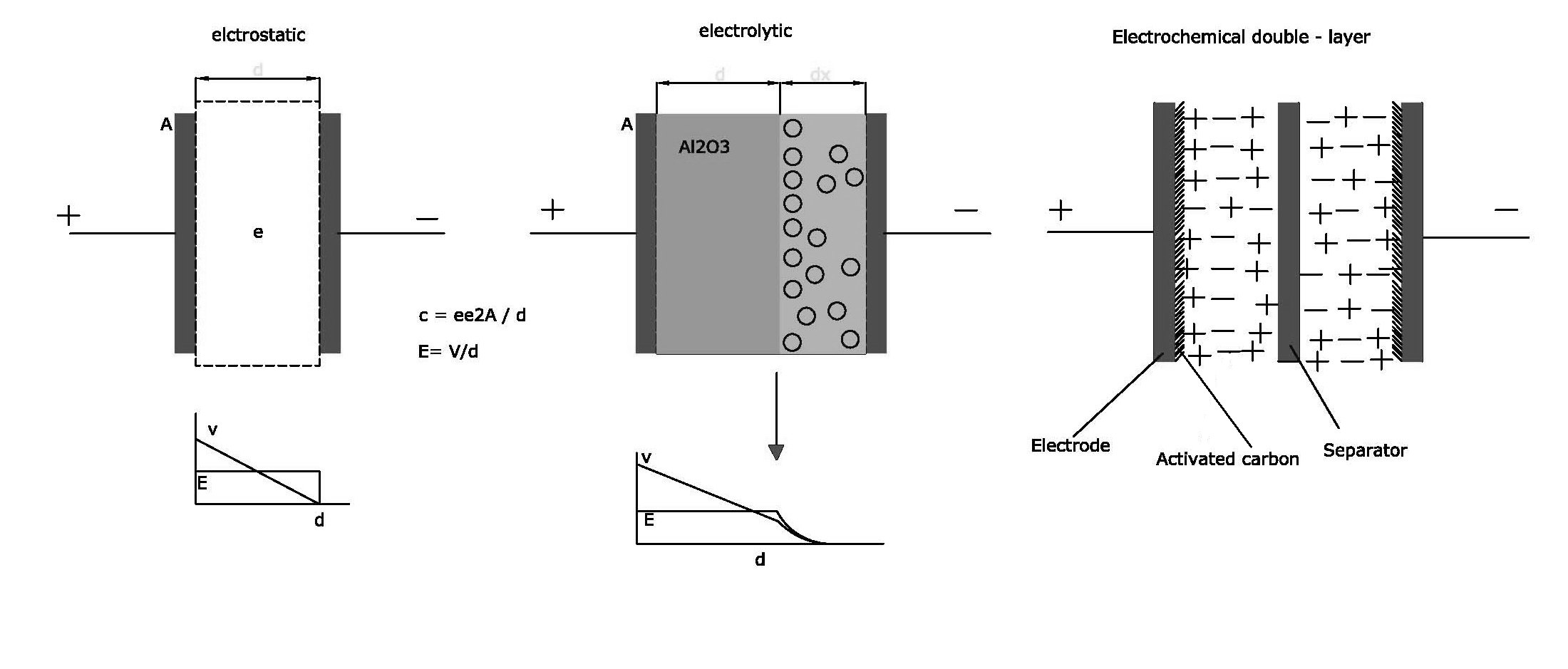
Int. J. Electrochem. Sci., 3 (2008) 1196 - 1217

 www.electrochemsci.org
www.electrochemsci.org
Review
Simple Capacitors to Supercapacitors - An Overview
M Jayalakshmi*, K Balasubramanian
Non-Ferrous Materials Technology Development Centre (NFTDC), Kanchanbagh Post, Hyderabad-
500058, India.
*E-mail: jayalakshmi@nftdc.res.in
 Received:
11
July
2008
/
Accepted:
1
September
2008
/
Published:
4
October
2008
Received:
11
July
2008
/
Accepted:
1
September
2008
/
Published:
4
October
2008
The renaissance of electrical/electrochemical double layer capacitors is occurring at a phenomenally high rate as the significant role of these power storage devices in traction, space flight technology, power electronics and other related fields is recognized. The needs of to-day’s computer world cannot be fulfilled by the conventional capacitors such as electrostatic and electrolytic capacitors as their utility is limited to certain specific applications. Electric double layer capacitor (EDLC) uses carbon as the electrodes and stores charge in the electric field at the interface. It uses either aqueous or non- aqueous electrolyte. It gives high power density but low energy density. So the next generation electrochemical double layer capacitor or super capacitor which uses transition metal oxide as the electrode material along with carbon has been under innovation which is expected to deliver both desirable power and energy densities. In this overview, an attempt to provide information on the chronological order of development of capacitors and the related research work is made.
Keywords: Electrostatic capacitor; Electrolytic capacitor; Ceramic capacitor; Electrical double layer capacitor; Super Capacitor
1. Introduction
This paper offers a concise review on the renaissance of a conventional capacitor to electrochemical double layer capacitor or super capacitor. Capacitors are fundamental electrical circuit elements that store electrical energy in the order of microfarads and assist in filtering. Capacitors have two main applications; one of which is a function to charge or discharge electricity. This function is applied to smoothing circuits of power supplies, backup circuits of microcomputers, and timer circuits that make use of the periods to charge or discharge electricity. The other is a function to block the flow of DC. This function is applied to filters that extract or eliminate particular frequencies. This is indispensable to circuits where excellent frequency characteristics are required. Electrolytic capacitors are next generation capacitors which are commercialized in full scale. They are similar to batteries in
cell construction but the anode and cathode materials remain the same. They are aluminum, tantalum and ceramic capacitors where they use solid/liquid electrolytes with a separator between two symmetrical electrodes.
The third generation evolution is the electric double layer capacitor, where the electrical charge stored at a metal/electrolyte interface is exploited to construct a storage device. The interface can store electrical charge in the order of ~106 Farad. The main component in the electrode construction is activated carbon. Though this concept was initialized and industrialized some 40 years ago, there was a stagnancy in research until recent times; the need for this revival of interest arises due to the increasing demands for electrical energy storage in certain current applications like digital electronic
devices, implantable medical devices and stop/start operation in vehicle traction which need very short high power pulses that could be fulfilled by electric double layer capacitors (EDLCs). They are complementary to batteries as they deliver high power density and low energy density. They also have longer cycle life than batteries and possess higher energy density as compared to conventional capacitors. This has led to new concepts of the so-called hybrid charge storage devices in which electrochemical capacitor is interfaced with a fuel cell or a battery. These capacitors using carbon as the main electrode material for both anode and cathode with organic and aqueous electrolytes are commercialized and used in day to-day applications. Fig. 1 presents the three types of capacitors
depicting the basic differences in their design and construction.

Figure 1. Schematic presentation of electrostatic capacitor, electrolytic capacitor and electrical double
layer capacitor.
EDLCs, however suffer from low energy density. To rectify these problems, recently researchers try to incorporate transition metal oxides along with carbon in the electrode materials. When the electrode materials consist of transition metal oxides, then the electrosorption or redox processes enhance the value of specific capacitance ca. 10 -100 times depending on the nature of oxides. In such a situation, the EDLC is called as supercapacitor or pseudocapacitor. This is the fourth generation capacitor. Performance of a supercapacitor combines simultaneously two kinds of energy storage, i.e. non-faradic charge as in EDLC capacitors and faradaic charge similar to processes proceeding in batteries. The market for EC devices used for memory protection in electronic circuitry
is about $150-200 million annually. New potential applications for ECs include the portable electronic device market, the power quality market, due particularly to distributed generation and low-emission hybrid cars, buses and trucks. There are some published reviews on capacitors and supercapacitors [1-
11]. In the present overview, the evolution of electrochemical double layer capacitors starting from simple electrostatic capacitors is summarized.
